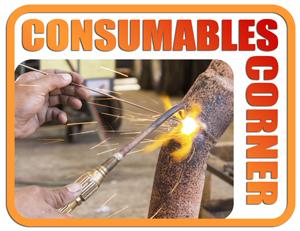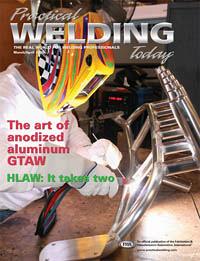- FMA
- The Fabricator
- FABTECH
- Canadian Metalworking
Categories
- Additive Manufacturing
- Aluminum Welding
- Arc Welding
- Assembly and Joining
- Automation and Robotics
- Bending and Forming
- Consumables
- Cutting and Weld Prep
- Electric Vehicles
- En Español
- Finishing
- Hydroforming
- Laser Cutting
- Laser Welding
- Machining
- Manufacturing Software
- Materials Handling
- Metals/Materials
- Oxyfuel Cutting
- Plasma Cutting
- Power Tools
- Punching and Other Holemaking
- Roll Forming
- Safety
- Sawing
- Shearing
- Shop Management
- Testing and Measuring
- Tube and Pipe Fabrication
- Tube and Pipe Production
- Waterjet Cutting
Industry Directory
Webcasts
Podcasts
FAB 40
Advertise
Subscribe
Account Login
Search
Consumables Corner: Sizing up seismic-friendly filler metals
- By Michael Ostaffe
- March 24, 2009
- Article
- Consumables
Q: I am confused about the various specifications for seismic applications. How can I know if I have the right filler metal for the job?
A: Your confusion is understandable. The documents overseeing seismic applications are ongoing and constantly revised. To fully understand this issue, we need to go back to 1994, when an earthquake in Northridge, Calif., caused devastating damage to buildings in the area. This prompted the Federal Emergency Management Agency (FEMA) to fund a variety of investigations into problems related to welded steel moment-frame connections. The resulting document, "Recommended Specifications and Quality Assurance Guidelines for Steel Moment-Frame Construction for Seismic Applications" (FEMA 353), dealt with overall structural design, connection design and details, materials, workmanship, and inspection.
While the FEMA document was being drafted, the American Institute of Steel Construction (AISC) and the American Welding Society (AWS) began to evaluate their respective specifications and codes to incorporate the results of the FEMA studies. The AISC publication focuses on the design of structures intended to resist seismically induced loads. The AWS document, AWS D1.8/D1.8M, "Structural Welding Code-Seismic Supplement," focuses on welding procedures, materials testing, and inspection. With lead-times of three to four years not uncommon in the building construction field, much of this specification, published in 2005, is just coming into practice today.
For all work done under D1.8, filler metals must meet the standard AWS A5.XX requirements. Demand-critical welds must also meet a minimum Charpy V-notch requirement of 40 ft.-lbs. (54 joules) at 70 degrees F, and a minimum strength level for both a high- and low-heat input test per Annex A of the AWS D1.8/D1.8M:2005 specification.
Filler metals must be capable of depositing weld metal with a maximum diffusible hydrogen content of 16 mL per 100 grams of deposited weld metal after a minimum exposure time of 72 hours at 80 degrees F / 80 percent relative humidity. When flux-cored filler metals are combined with different flux-cored filler metals or filler metals deposited by other processes, the resulting combination must be checked to ensure that the minimum required Charpy V-notch is obtained and the welds meet the more stringent requirements. This is known as intermix testing.
Filler metal manufacturers diligently test their products to ensure that they meet the requirements of D1.8. If you have questions about your filler metal, contact the manufacturer to verify what testing has been done.
About the Author

Michael Ostaffe
ESAB Welding & Cutting Products
Filler Metal Manufacturing Center, 801 Wilson Ave. P.O. Box 517
Hanover, PA 17331
About the Publication
Related Companies
subscribe now

The Welder, formerly known as Practical Welding Today, is a showcase of the real people who make the products we use and work with every day. This magazine has served the welding community in North America well for more than 20 years.
start your free subscription- Stay connected from anywhere

Easily access valuable industry resources now with full access to the digital edition of The Fabricator.

Easily access valuable industry resources now with full access to the digital edition of The Welder.

Easily access valuable industry resources now with full access to the digital edition of The Tube and Pipe Journal.
- Podcasting
- Podcast:
- The Fabricator Podcast
- Published:
- 04/16/2024
- Running Time:
- 63:29
In this episode of The Fabricator Podcast, Caleb Chamberlain, co-founder and CEO of OSH Cut, discusses his company’s...
- Industry Events
16th Annual Safety Conference
- April 30 - May 1, 2024
- Elgin,
Pipe and Tube Conference
- May 21 - 22, 2024
- Omaha, NE
World-Class Roll Forming Workshop
- June 5 - 6, 2024
- Louisville, KY
Advanced Laser Application Workshop
- June 25 - 27, 2024
- Novi, MI
































